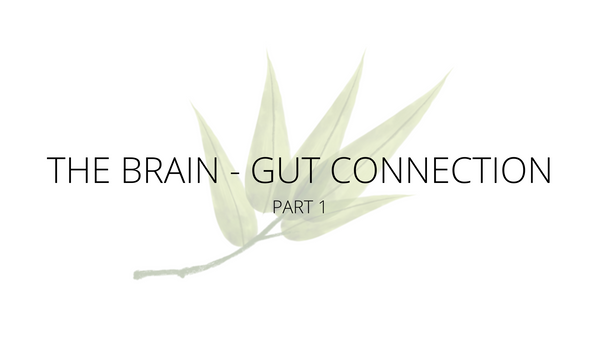BRAIN - GUT CONNECTION 1


“The primary seat of mental disorder generally is in the region of the stomach and intestines.” And yet the last thing a modern psychiatrist would pay attention to is the patient’s digestive system. Medical history has plenty of examples, where severe psychiatric conditions were cured by simply ‘cleaning out’ the patient’s gut. A renowned Japanese professor, Kazudzo Nishi, has estimated that at least one in ten psychiatric conditions is due to self intoxication coming from the bowel.
Having particular microbes in the digestive system can provide us with our own permanent source of toxicity
Everybody knows what effect alcohol, which goes into our digestive system, has on our brains. However, we don’t have to consume toxic substances to affect our brains. Having particular microbes in the digestive system can provide us with our own permanent source of toxicity. An unknown number of various neurotoxins are produced by abnormal flora in the gut. These are absorbed through the damaged gut wall into the blood and is taken to the brain. These are absorbed by children and adults suffering from digestive and psychological problems. They develop an overgrowth of pathological flora in their bodies. One group of these pathogens are yeasts, including the Candida species.
Candida overgrowth
Alcohol and its by-products have a small molecular weight, which makes it very easy for the to cross any barrier in the body. They get absorbed into the blood very quickly and have a very good ability to get through the placenta to a developing fetus. If a woman already has Candida overgrowth in her body, pregnancy would make this problem worse. Overgrowing yeast in a pregnant woman would produce alcohol and its by-products, affecting the child’s development. After the child is born, it will continue to get alcohol and its by-products through breast milk, which usually contains the same amount as the woman’s blood. Then because the child inherits the mother’s bodily flora, overrun by yeast, the child starts producing its own alcohol and many other toxins. Alcohol consumption and yeast overgrowth in fathers also has an effect on the child’s development. More than 50 % of fathers of autistic children suffer from abnormal gut flora and related health problems.
Acetaldehyde
A by-product of alcohol which is considered to be the most toxic is acetaldehyde. It has the ability to alter the structure of proteins. We are largely made up of proteins; a myriad of various active substances from hormones to enzymes are proteins. Acetaldehyde-altered proteins are thought to be responsible for many auto-immune reactions, which means the immune systems starts attacking its own body. Antibodies which the immune system makes to destroy these acetaldehyde-altered proteins may also attack the normal proteins in the body with a similar structure. Those with gut disorders are commonly found to have antibodies against their own tissues.
One of the most common antibodies is a substance called myelin. It is an integral part of the brain anatomy and the rest of the nervous system, coating brain cells and their branches, the nerve fibers. When myelin is damaged, it manifests itself as multiple sclerosis, functional dysfunction, or thyroid dysfunction.
Gluten & CASEIN A1
Gluten is a protein present in grains, mainly wheat, rye, oats and barley. Casein, a milk protein present in cows and other milk products is Casein A1. Casein in sheep, goat, buffalo, camel, human milk is Casein A2. In the bodies of people who have gut issues, these proteins, Gluten and Casein A1, do not get digested properly and turn into substances with similar chemical structures to opiates, such as morphine and heroin. Studies show that gluten and casein A1 peptides were detected in the urine of patients with schizophrenia, autism, ADHD, post-partum psychosis, epilepsy, Downs syndrome, depression and some autoimmune problems like rheumatoid arthritis.
These opiates from grains and milk with Casein A1 are thought to get through the blood-brain barrier and block certain areas of the brain, just as morphine or heroin would. The explanation is in the persons digestive system that is in a poor state.
The digestion of proteins starts in the stomach with the action of pepsin, a protein-digesting enzyme produced by the stomach wall. Stomach acid is essential for protein digestion, as it provides normal conditions for pepsin to do its work of breaking down proteins into shorter peptide chains.
These people commonly have low stomach acidity due to abnormal gut flora and overgrowth of pathogenic flora. For example, Candida alone can make toxins which have a strong suppressing ability on the stomach acid production. These toxins would be excreted with breast milk in a mother with Candida overgrowth in her gut.
While breastfeeding, children receive these toxins from the mother through the breast milk, which impair production of stomach acid from the beginning of a child’s life. As the breast milk requires virtually no digestion, the child does not need much stomach acid while exclusively breastfed. But when the other foods get introduced, the child’s low acidity becomes a problem. By the time breastfeeding stops, the child’s digestive system would probably have grown enough of its own Candida and other pathogens to produce toxins, which would carry on reducing the stomach acidity. The most usual weaning proteins first introduced to the child’s digestive system are casein A1 from cow’s formula milk and gluten from wheat.
In abnormal gut flora, these enterocytes are in poor shape and are unable to accomplish these final steps in the digestion of casein A1, gluten and many other nutrients.

Thus, it is advisable for expecting mothers to take care of their gut to give their child the best mothers milk and to ensure the child's well-being.
